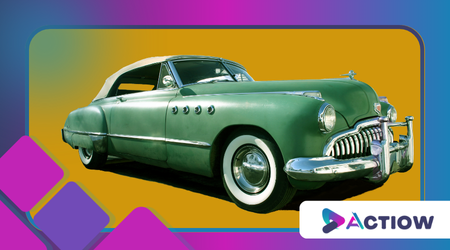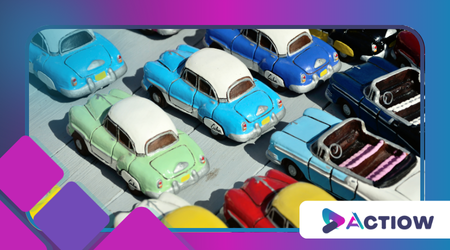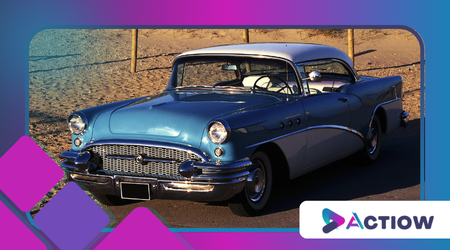Why Cuban Cars Still Look Like It’s 1950
Anúncios
Why Cuban Cars Still Look Like It’s 1950?
When you picture Cuba, vibrant images of colorful streets, salsa rhythms, and classic cars likely come to mind.
The phrase Cuban Cars Still Look Like It’s 1950 isn’t just a catchy observation it’s a vivid reality that defines the island’s aesthetic and cultural identity.
Anúncios
These vintage vehicles, often American-made classics from the 1940s and 1950s, roam the streets of Havana and beyond, captivating tourists and locals alike.
But why do these cars, with their chrome trims and pastel paint, persist in a world of sleek, modern vehicles?
The answer lies in a unique blend of historical, economic, and cultural factors that have frozen Cuba’s automotive scene in time.
A Timeless Snapshot of Cuba’s Automotive Landscape

The story begins with Cuba’s pre-revolutionary era, when the island was a playground for American wealth and influence.
In the 1950s, Cuba imported thousands of American cars—think Chevrolet Bel Airs, Ford Thunderbirds, and Plymouth Furys.
++ Why Soviet Cars Had Built-In Ice Scrapers and Ashtrays
These vehicles symbolized prosperity and style, their tailfins and bold designs reflecting the optimism of the era.
However, the 1959 Cuban Revolution and the subsequent U.S. embargo drastically altered the trajectory. New car imports ground to a halt, leaving Cubans with a finite fleet of vehicles.
Consequently, these cars became more than transportation; they became a way of life, preserved through ingenuity and necessity.
Imagine a time capsule, buried in 1960 and unearthed today, revealing a perfectly preserved snapshot of an era.
Cuba’s cars are just that a living analogy for a nation caught in a historical pause.
While the world moved on to electric vehicles and autonomous driving, Cuba’s streets remain a rolling museum.
This phenomenon isn’t just about aesthetics; it reflects a deeper narrative of resilience, resourcefulness, and cultural pride.
++ The Secret Behind the Shape of the Volkswagen Beetle
Why do these cars endure?
Because they embody Cuba’s ability to adapt and thrive under constraints, turning limitations into a globally recognized symbol.
Historical Context: The Embargo’s Lasting Impact

The U.S. embargo, imposed in 1960, serves as the cornerstone of why Cuban Cars Still Look Like It’s 1950.
After the revolution, the United States cut off trade with Cuba, halting the flow of new cars and parts.
++ The History of Ford: How the Brand Democratized the Automobile
As a result, Cubans faced a stark choice: abandon their vehicles or find ways to keep them running.
They chose the latter, transforming necessity into an art form.
Mechanics, often self-taught, became wizards of improvisation, using handmade parts, Soviet-era replacements, or even household items to maintain these aging machines.
For instance, consider Juan, a Havana mechanic who inherited his father’s 1953 Chevrolet.
When the original carburetor failed, Juan crafted a replacement using parts from a Russian Lada and a modified bicycle pump.
This ingenuity isn’t unique to Juan; it’s a widespread practice across the island.
Mechanics swap out V8 engines for diesel ones, repurpose tractor parts, and even fashion brake pads from scrap metal.
These adaptations ensure that cars from the 1950s remain functional, albeit with a patchwork of modifications that would baffle modern engineers.
The embargo’s ripple effects extend beyond mechanics.
With no access to new vehicles, car ownership became a status symbol, and maintaining a classic car became a point of pride.
According to a 2016 study by the Cuban Automotive Association, approximately 60,000 pre-1960 American cars still operate in Cuba, a testament to their durability and the resourcefulness of their owners.
Yet, this preservation comes at a cost.
Maintaining these vehicles is labor-intensive and expensive, often requiring owners to spend significant portions of their income on repairs.
Nevertheless, the cultural value of these cars outweighs the financial burden, cementing their place in Cuba’s identity.
| Impact of the U.S. Embargo on Cuban Cars | Details |
|---|---|
| Year Imposed | 1960 |
| Primary Effect | Halted import of new cars and parts from the U.S. |
| Estimated Pre-1960 Cars in Use (2016) | ~60,000 |
| Common Adaptations | Use of Soviet parts, handmade components, and diesel engine swaps |
Cultural Significance: More Than Just Cars

Beyond their mechanical survival, these vintage vehicles hold profound cultural significance.
In Cuba, cars are not merely tools for transportation; they are heirlooms, passed down through generations, each scratch and dent telling a story.
For many Cubans, a 1955 Buick isn’t just a car—it’s a family member, a link to a past that predates the revolution.
This emotional attachment fuels the determination to keep these vehicles running, even when modern alternatives become available.
Take Maria, a tour guide in Varadero, who drives her grandfather’s 1957 Ford Falcon to ferry tourists.
For her, the car is a connection to her family’s history and a source of income. Tourists flock to ride in these classics, drawn by their retro charm and the stories behind them.
This tourism boom has turned the cars into economic assets, with owners charging premium rates for rides or photo ops.
Consequently, the cars have become ambassadors of Cuban culture, showcasing the island’s resilience and creativity to the world.
Why do Cubans cling to these relics when newer cars are now trickling in?
The answer lies in identity.
These vehicles are a visual rebellion against the passage of time, a refusal to let go of a bygone era.
They stand as a testament to Cuba’s ability to preserve its heritage in the face of adversity.
Moreover, they challenge the disposable culture of modern consumerism, where cars are replaced every few years.
In Cuba, a car isn’t just kept; it’s cherished, repaired, and reimagined, embodying a philosophy of sustainability that resonates in today’s eco-conscious world.
Economic Realities: The Cost of Preservation
The economic landscape of Cuba further explains why Cuban Cars Still Look Like It’s 1950.
The embargo, combined with Cuba’s centrally planned economy, created a scarcity of resources that made new car purchases nearly impossible for decades.
Even after the government relaxed restrictions on car imports in 2013, high taxes and limited incomes kept modern vehicles out of reach for most Cubans.
A new car might cost upwards of $50,000, while the average monthly salary hovers around $30-$50.
This economic disparity ensures that vintage cars remain the backbone of Cuba’s transportation.
Maintaining these cars, however, is no small feat. Parts are scarce, and original components are virtually nonexistent.
Mechanics often rely on a black market for parts or create their own, driving up costs.
For example, a single replacement headlight for a 1950s Cadillac might cost $100 on the black market equivalent to several months’ wages.
Yet, owners persist, driven by necessity and pride.
The economic incentive of tourism also plays a role, as classic cars generate income that newer vehicles cannot match.
This economic dynamic creates a paradox: while the cars are a symbol of stagnation, they also represent opportunity.
The tourism industry, which accounts for roughly 10% of Cuba’s GDP, relies heavily on the allure of these vintage vehicles.
Owners who maintain their cars can earn significantly more than the average Cuban, turning a relic into a revenue stream.
Thus, the economic realities of Cuba both necessitate the preservation of these cars and reward those who maintain them, creating a self-sustaining cycle.
| Economic Factors Affecting Cuban Cars | Details |
|---|---|
| Average Monthly Salary | $30-$50 |
| Cost of a New Car (Post-2013) | ~$50,000 |
| Tourism’s Contribution to GDP | ~10% |
| Typical Cost of a Replacement Part | $50-$200 (black market) |
Ingenuity and Adaptation: The Cuban Mechanic’s Art
Cuban mechanics are the unsung heroes behind the phrase Cuban Cars Still Look Like It’s 1950.
Without access to original parts or modern tools, they have developed a culture of improvisation that rivals any engineering feat.
These mechanics don’t just repair cars; they reinvent them, blending 1950s aesthetics with whatever components are available.
This ingenuity transforms a 1956 Pontiac into a hybrid of American design and Soviet functionality, often with a dash of Cuban flair.
For example, a mechanic might replace a failed transmission with one from a 1980s Volga, a Soviet car imported during Cuba’s alliance with the USSR.
The result is a vehicle that looks like it rolled off a Detroit assembly line but runs on a mishmash of global parts.
This adaptability extends to aesthetics as well owners repaint their cars in vibrant hues, ensuring they remain eye-catching for tourists.
The process is a delicate balance of preserving the car’s original charm while ensuring it can navigate Cuba’s rough roads.
This ingenuity reflects a broader Cuban ethos: making do with what’s available.
In a world obsessed with innovation, Cuba’s mechanics remind us that creativity thrives under constraints.
Their work challenges the notion that progress requires newness, showing that old machines can live on through clever adaptation.
Could there be a lesson here for the rest of the world, where planned obsolescence dominates?
Cuba’s cars suggest that sustainability and resourcefulness can create something enduring and beautiful.
The Future of Cuban Cars: Evolution or Preservation?
As Cuba slowly opens to the world, the future of its vintage cars hangs in the balance.
Since 2013, relaxed import laws have allowed some modern vehicles to enter the island, particularly from China and Europe.
However, these cars remain prohibitively expensive, and the cultural and economic value of classic cars ensures their dominance for now.
Yet, change is inevitable. Younger generations, exposed to global trends, may prioritize modern convenience over nostalgic charm, potentially shifting the automotive landscape.
Tourism, however, may preserve these cars longer than expected.
The global fascination with Cuban Cars Still Look Like It’s 1950 drives demand for rides, photos, and even car rentals, incentivizing owners to maintain their vehicles.
Some entrepreneurs have even begun restoring cars specifically for the tourist market, importing rare parts at great expense.
This trend suggests that while some cars may retire, others will be polished and preserved as cultural artifacts, much like vintage cars in wealthier nations.
The question remains: will Cuba’s cars evolve into modern hybrids or remain frozen in their 1950s glory? The answer likely lies in a blend of both.
As Cuba navigates its economic and cultural future, these cars will continue to tell a story of resilience, adaptation, and pride.
They are more than vehicles; they are a testament to a nation’s ability to turn limitations into legacy, ensuring that the phrase Cuban Cars Still Look Like It’s 1950 remains relevant for years to come.
Frequently Asked Questions
| Question | Answer |
|---|---|
| Why are there so many 1950s cars in Cuba? | The U.S. embargo halted new car imports, forcing Cubans to maintain existing vehicles. |
| How do Cubans keep these old cars running? | Mechanics use handmade parts, Soviet-era components, and creative adaptations. |
| Are these cars original? | Many have replacement parts, but their exterior design retains the 1950s aesthetic. |
| Can tourists ride in these classic cars? | Yes, many owners offer rides or tours, especially in Havana and Varadero. |
| Will modern cars replace Cuba’s vintage cars? | High costs and tourism demand suggest vintage cars will persist for now. |
